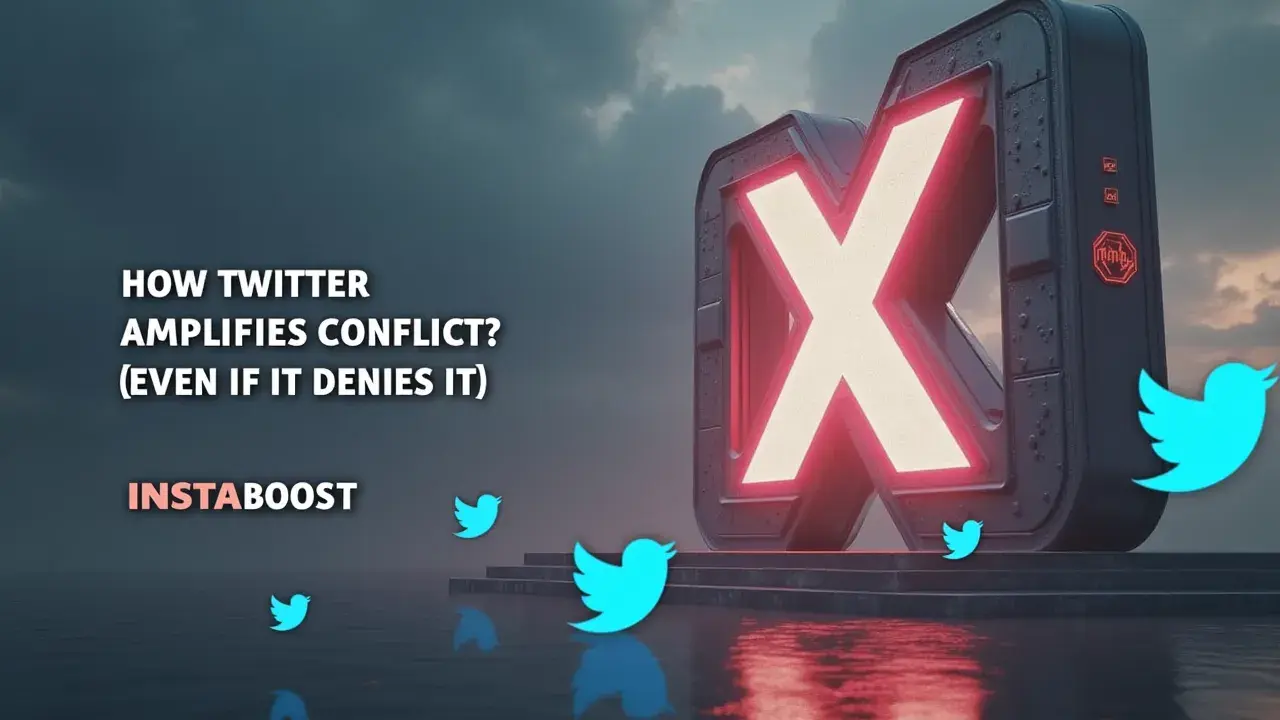How X (Twitter) Amplifies Conflict, Even If It Denies It?
X (Twitter) can amplify conflict when its design rewards attention-grabbing, polarizing content. Features like rapid public replies, visibility metrics, and algorithmic ranking can privilege provocative posts and escalate exchanges, even if the platform claims neutrality and passive influence. The dynamic favors sharp contrasts over nuance, making contentious threads more prominent. Using measured language and engaging selectively can keep discussions productive while still benefiting from reach and immediacy.
When Connection Breeds Clash
Twitter calls itself a global town square, a place where everyone can join in and share their views with people from all over. But if you’ve actually spent any time there, you notice how quickly conversations can turn into arguments. The features that keep people scrolling – like retweets, replies, and seeing how many likes a post gets – are built to keep you engaged, but they usually pull the focus away from real conversation.
The tweets that rise to the top are almost always the ones that stir up strong feelings or tap into group loyalties, since Twitter’s algorithms are tuned to boost whatever grabs attention, not whatever brings nuance. This isn’t only about how people act online; it’s built into the way the platform works, and it lines up with how Twitter makes its money. Even though Twitter says its influence is limited, the platform keeps nudging people toward posts that are more likely to get a reaction than start any kind of thoughtful back-and-forth.
A lot of the time, people who are honestly trying to explain something or help out end up getting ignored or misread in the middle of all the louder opinions. Some even turn to outside services to purchase X engagement, hoping to break through the noise.
So, you end up with a space where conflict is almost the norm. It makes you question whether open, genuine dialogue can really happen there, or if that’s just what we’re supposed to think. People who actually want to connect have to pay attention to how all this works, which is why social media strategists and tools like INSTABOOST spend so much effort trying to figure out ways around it.
So, you end up with a space where conflict is almost the norm. It makes you question whether open, genuine dialogue can really happen there, or if that’s just what we’re supposed to think. People who actually want to connect have to pay attention to how all this works, which is why social media strategists and tools like INSTABOOST spend so much effort trying to figure out ways around it.

Why Outrage Wins the Algorithm
A lot of seasoned marketers miss what’s actually happening on Twitter. There’s this idea that it’s a place for smart takes and well-written threads, but the reality is a bit different. Twitter’s design and algorithms push posts that spark a reaction – especially anything that stirs up debate or disagreement. When a tweet sets off a stream of replies or gets passed around quickly, the system notices and spreads it even further, because it reads all that activity as a sign that people care. It turns out, posts that make people angry or appeal to strong moral feelings get shared much more than the ones that try to offer a calm or balanced perspective.
Studies back this up. It’s not a coincidence, and it’s not really about encouraging thoughtful back-and-forth. Twitter is built to keep people engaged, so it highlights whatever is likely to make you stay and interact, not necessarily whatever is most helpful or reasonable. Even follower counts can be misleading – there are plenty of accounts with what amounts to a cheap Twitter fanbase that look influential on the surface. Even when you post matters – a tweet during a big news event or right when something controversial is happening is more likely to get picked up and shown to a wider group, because the system is always looking for what’s likely to get a strong response in the moment.
That means people who post the most provocative or attention-grabbing things tend to get their voices amplified, while more careful or considered posts are often drowned out. So while Twitter might describe itself as a place for public conversation, you end up in a space where arguments and strong reactions are the main drivers. If what you want is a real exchange of ideas, it helps to see these patterns for what they are, rather than assuming you’re in a space built for genuine, steady conversation.
Redesigning for Real Engagement
Right now, Twitter isn’t set up to let people be surprised or to make space for anything outside the usual arguments. Its design encourages quick reactions because those get the most attention, while slower, more careful conversations fall into the background. If we actually want fewer pointless fights, Twitter would have to change what kinds of posts it rewards. For example, the system could stop putting the most inflammatory tweets at the top, and instead let people see more of the longer threads where someone works through a real idea or tries to explain something. Making the retweet process a bit less automatic, or rewarding people who talk with others they don’t agree with, might make a difference too.
Even small things – like showing notifications for thoughtful responses before the ones that stir everyone up – could help. These aren’t big fixes, but they could remind people that there’s more to being on Twitter than chasing likes or trying to win arguments. For brands like INSTABOOST, which aim to help clients get more out of their tweets, it’s worth thinking about how these changes would shape the way people interact – focusing more on conversations that actually go somewhere, instead of tweets that make people upset for a few minutes. After all, there’s a difference between posts that offer real insight and those that mostly get Twitter post likes, and if more attention shifted to thoughtful content, the whole platform might feel a bit more worthwhile.
The Limits of Civil Disagreement on Twitter
I thought that if I stuck to sharing thoughtful, balanced opinions on Twitter, avoided sarcasm, and didn’t get into arguments, I could actually have some good conversations there. But I’ve realized it doesn’t really matter how careful you are. Twitter isn’t set up for civil disagreement. It’s less about people wanting to argue and more about how the algorithm rewards anything likely to cause a reaction. If you try to explain something with nuance or ask a genuine question, you end up with replies from people on all sides, and it’s easy for your words to get taken out of context or picked apart in quote-tweets.
Suddenly there’s attention, but not for what you were trying to talk about. The numbers – likes, retweets, replies – don’t really show whether anyone’s having a real back-and-forth. Sometimes it’s almost surreal to watch a tweet rack up organic-looking views on X even as the actual exchange goes nowhere. Even when you try to model the kind of exchange you’d like to see, you’re up against a system that seems to reward the opposite. It’s frustrating, but more than that, it’s part of how Twitter is built. Unless the platform changes how it values interactions, thoughtful comments tend to get pushed aside while the loudest or most divisive ones float to the top. Whether you’re running a brand account like INSTABOOST or just trying to share an idea, it’s hard to avoid how quickly things can turn into a back-and-forth that you never intended.















